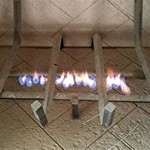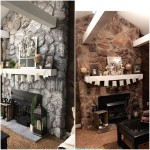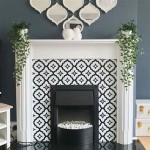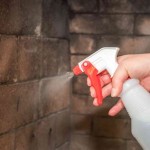Rock For Fireplace: A Guide to Selecting and Using Natural Stone
The incorporation of natural stone in fireplace design has been a long-standing practice, appreciated for its aesthetic appeal, durability, and thermal properties. Using rock for fireplace surrounds, hearths, and even fireboxes provides a unique sense of character and connection to the natural world. This article aims to provide a comprehensive overview of the considerations involved in selecting and using rock for fireplace applications.
The selection of appropriate rock types is crucial to ensure both the longevity and safety of the fireplace. Different rock types possess varying levels of heat resistance, porosity, and structural integrity. Choosing the wrong type can lead to cracking, spalling, or even more significant structural damage over time. Moreover, the aesthetic characteristics of the rock should complement the overall design of the space and reflect the homeowner's preferences.
Understanding Rock Types and Their Properties
The geological composition of different rocks dictates their suitability for fireplace applications. Rocks are broadly classified into three categories: igneous, sedimentary, and metamorphic. Each category exhibits distinct properties that influence their performance and aesthetic characteristics. Considering these properties is paramount when selecting rock for fireplace construction.
Igneous rocks, formed from the cooling and solidification of magma or lava, are generally dense and possess high heat resistance. Granite and basalt are common examples of igneous rocks. Granite, with its granular texture and diverse color variations, is a popular choice for fireplace surrounds and hearths. Basalt, being darker in color and possessing a finer grain, offers a more contemporary aesthetic. The density of igneous rocks makes them resistant to thermal shock and cracking.
Sedimentary rocks, formed from the accumulation and cementation of sediments, often exhibit layered structures and varying levels of porosity. Limestone, sandstone, and slate are common examples. Limestone, known for its light color and relatively soft texture, is often used for decorative fireplace surrounds. Sandstone, composed of cemented sand grains, offers a rustic aesthetic and good heat resistance. Slate, with its layered structure and dark color, is commonly used for fireplace facing and hearths due to its durability and resistance to staining. The porosity of sedimentary rocks can be a concern, requiring sealing to prevent moisture absorption and potential damage from freezing and thawing cycles.
Metamorphic rocks, formed from the transformation of existing rocks under high pressure and temperature, often exhibit enhanced hardness and unique textural patterns. Marble, quartzite, and schist are common examples. Marble, known for its polished surface and intricate veining, is a luxurious choice for fireplace surrounds. Quartzite, a highly durable and heat-resistant rock, is suitable for both surrounds and hearths. Schist, with its layered structure and shimmering appearance due to the presence of mica minerals, adds a distinctive visual element to fireplace designs. Metamorphic rocks generally offer good heat resistance and durability, making them well-suited for fireplace applications.
In addition to the broad classifications, it’s critical to consider the specific characteristics of each individual stone. Factors such as mineral content, grain size, and presence of fissures or cracks can all influence its performance in a high-heat environment. A professional evaluation of the rock is recommended to ensure its suitability for the intended application.
Design Considerations and Installation Techniques
The design of a rock fireplace plays a significant role in the overall aesthetic of the room. The size, shape, and arrangement of the rocks can create a range of visual effects, from rustic and naturalistic to modern and sophisticated. Careful planning is essential to achieve the desired look.
The size and shape of the rocks should be proportional to the size of the fireplace and the room it occupies. Large, irregular rocks can create a dramatic statement in a spacious room, while smaller, more uniform rocks may be more appropriate for a smaller space. The arrangement of the rocks can also influence the overall aesthetic. A random, asymmetrical arrangement can create a natural, organic look, while a more structured, symmetrical arrangement can create a more formal and contemporary feel.
The installation of rock for fireplace applications requires specialized skills and knowledge. Proper mortaring techniques are essential to ensure the stability and longevity of the structure. The type of mortar used should be specifically formulated for high-temperature applications and compatible with the type of rock being used. The mortar should be applied evenly and thoroughly to ensure a strong bond between the rocks.
The installation process should also take into account the expansion and contraction of the rocks due to temperature fluctuations. Expansion joints may be necessary to prevent cracking and spalling. These joints allow the rocks to move slightly without putting stress on the surrounding structure. Proper ventilation is also crucial to prevent moisture buildup and ensure efficient combustion.
Furthermore, it’s vital to ensure the fireplace meets all relevant building codes and safety regulations. This includes proper clearances from combustible materials, adequate chimney draft, and appropriate firebox construction. Consulting with a qualified contractor or architect is highly recommended to ensure a safe and compliant installation.
Maintenance and Safety Protocols
Regular maintenance is essential to ensure the longevity and safety of a rock fireplace. Cleaning and inspection should be performed periodically to identify and address any potential problems.
Cleaning the rock surface helps to remove soot, dust, and other debris that can accumulate over time. A soft brush and mild detergent can be used to clean the rocks. Harsh chemicals and abrasive cleaners should be avoided, as they can damage the rock surface. After cleaning, the rocks should be thoroughly rinsed with water and allowed to dry completely.
Inspection of the fireplace should include checking for cracks, spalling, or loose mortar. Any damage should be repaired promptly to prevent further deterioration. Cracks can be repaired with a high-temperature mortar, and loose mortar should be removed and replaced. Spalling, which is the flaking or crumbling of the rock surface, may indicate a more serious problem, such as moisture damage or thermal stress. In such cases, a professional evaluation is recommended.
Safety protocols are paramount when operating a fireplace. The fireplace should never be left unattended while a fire is burning. A fire screen should always be used to prevent sparks from escaping the firebox. The chimney should be cleaned regularly to remove creosote buildup, which is a highly flammable substance. A carbon monoxide detector should be installed in the home to alert occupants to the presence of this dangerous gas. Following these safety protocols can help to prevent fires and accidents.
Selecting and using rock for fireplaces involves a careful consideration of rock types, design principles, installation techniques, and maintenance procedures. By understanding these factors, homeowners can create a beautiful and functional fireplace that will provide warmth and enjoyment for years to come.

Why Your Home Could Use A Stone Fireplace

M Rock Post Surround 6 X Brown 2 08 Lin Ft Stone Veneer At Com

Fireplaces Eldorado Stone

65 Best Stone Fireplace Design Ideas To Ignite Your Decor Designs Home Farmhouse

60 River Rock Stone Molds Make 1000s Fireplace Wall Veneer Free

M Rock Manufactured Concrete Fireplace Trim Kit Gray Mrfireplacegray The Home Depot

Natural Stacked Stone Veneer Fireplace Ideas

Standout Country Rock Fireplaces That Really

Rock Ledge Fireplace Amish Furniture By Shipshewana Co

Fireplaces Eldorado Stone
Related Posts








